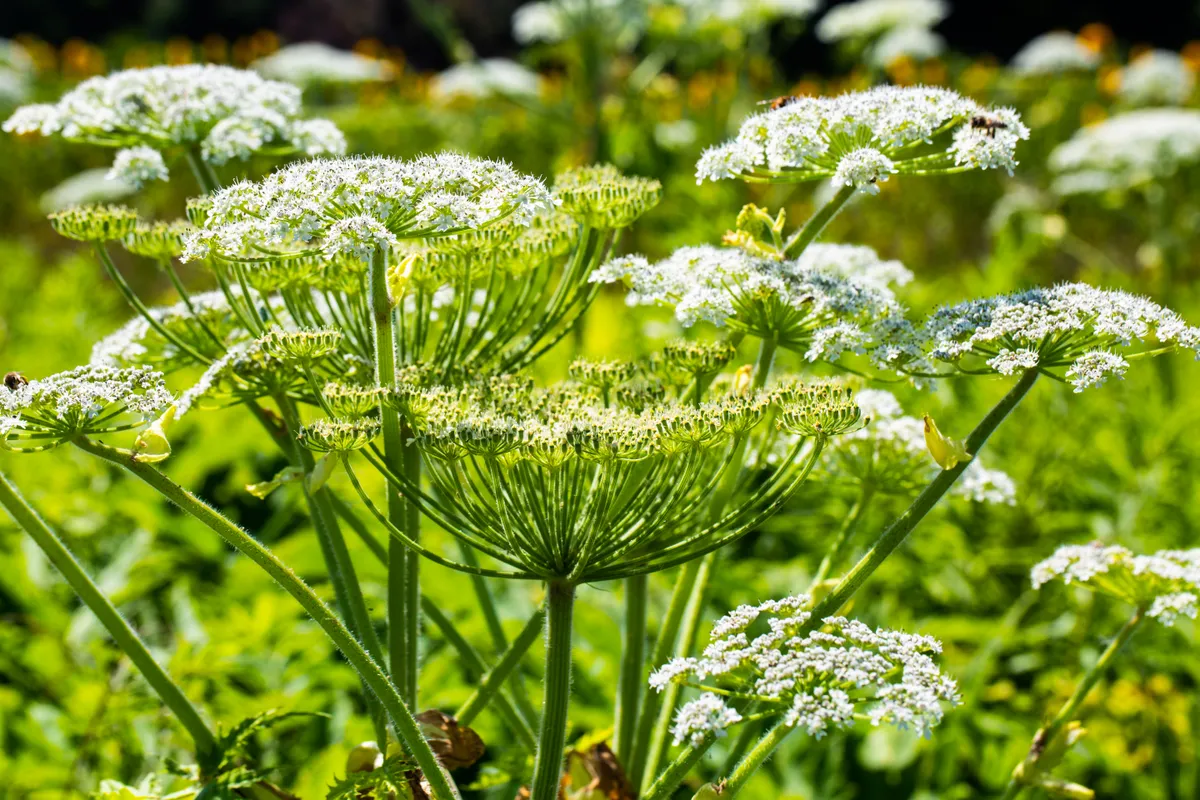Delicate clusters of flowers are dotting our verges and field margins; tiny petals balanced on short stalks and neatly splayed as though arranged by a florist. They are Apiaceae or Umbelliferae, commonly known as umbellifers, comprising more than 3,800 species worldwide and one of the earliest identified plant families.
The flower umbels that make the plants so distinctive can vary in colour from pink to yellow but are most often white. While some species, such as fennel or carrot, are familiar as food when cultivated, others can be deadly poisonous or cause allergic reactions. So it is probably safer to look but not touch.
In this guide, we explore six of the UK's most common umbellifers, including cow parsley, hogweed, giant hogweed, wild carrot, ground elder and hemlock.
- Interested in learning more about Britain's flora? Check out our guides to orchids, bluebells and ferns.

Common umbellifers of the UK
Cow parsley (Anthriscus sylvestris)

Come May, cow parsley (Anthriscus sylvestris) seems to line every country road, track and footpath.
The flowers are small and delicate, with five creamy-white petals on short stalks that are arranged in groups of up to 10 to form an umbel. The leaves are green and feathery and the stalk is striated.
Cow parsley is edible but it can be difficult to identify from some very poisonous relations.
Hogweed (Heracleum sphondylium)

Hogweed (Heracleum sphondylium) is one of several umbellifers that appears in summer.
One of its most distinctive features is its size; it can grow a high as two metres. The stems are similar in appearance to cow parsley, but thicker and more robust with coarse hairs.
The umbels consist of as many as 45 rays, and the flowers are white, sometimes with a pinkish tinge.
Orchids of the UK
Learn how to identify the UK's most common orchids with our species guide.

Giant hogweed (Heracleum mantegazzianum)

Giant hogweed (Heracleum mantegazzianum) has built itself a fearsome reputation since being introduced to the British Isles as an ornamental plant in the 19th century.
It often grows in excess of two metres and sometimes as tall as five metres, with thick stems. The large leaves are deep green in colour with clear lobes and jagged edges.
The stalk is hollow and deeply ridged, mainly green but with reddish-purple blotches and pronounced white hairs.
The umbels are enormous, measuring up to 60cm across, comprising between 50 and 150 rays.
Contact with giant hogweed should be avoided, particularly under strong sunlight, as, even after minimal contact, its sap can result in large, painful blisters on the skin.
Wild carrot (Daucus carota)

Wild carrot (Daucus carota) is widespread throughout the British Isles, save the far north.
It's a small umbellifer, rarely growing taller than 60cm. It has three forked bracts (small, leaflike structures) that form beneath the flowerhead, and the leaves are slender but robust.
Above the bracts, a splay of stiff rays form a tight, almost semi-spherical cluster of flowers. The petals are white, with the exception, more often than not, of the central flower, which is red.
Ground elder (Aegopodium podagraria)

Ground elder (Aegopodium podagraria) is so called due to the delicate white flowers that combine to resemble the elder tree (Sambucus nigra). Its leaves are triangular, toothed and arranged in threes.
The leaves of ground elder – which are dark green – are sought after by foragers. When young, they may be eaten as salad leaves or used in soups.
The flowers appear from May to July.
Hemlock (Conium maculatum)

All parts of the Hemlock (Conium maculatum) plant contain coniine, which, when ingested, can be fatal to humans.
In appearance, hemlock could very easily be mistaken for wild carrot or cow parsley and is often found in similar areas, though its leaves have a slightly glossy sheen, and its stem has distinctive purple blotches.
One of its defining characteristics is its foul odour, particularly when the leaves are crushed.
If there is any doubt, then look but definitely do not touch.
Guide to British butterflies
In our expert guide, we take a look at butterfly identification, common butterfly species, how long butterflies live, and where to see them in the UK.


